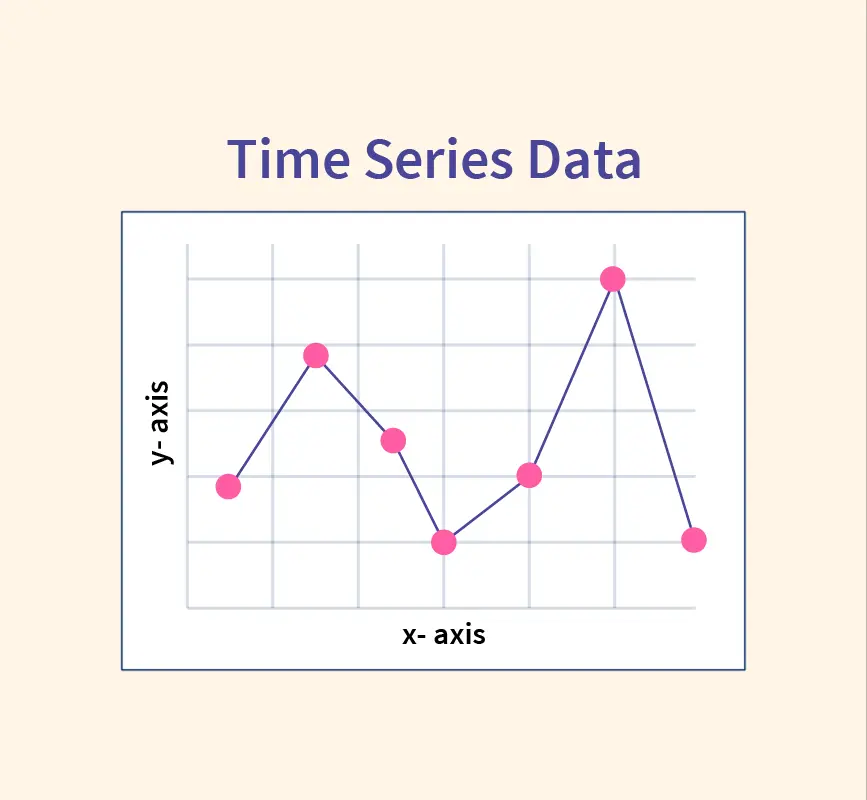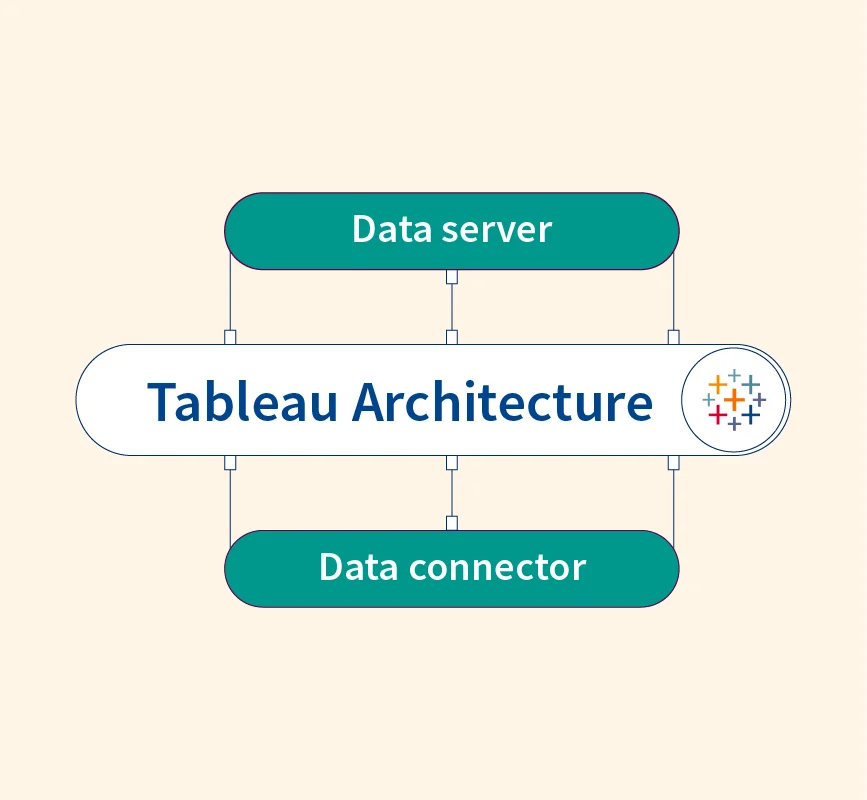Data wrangling, also known as data munging, is the process of transforming and mapping raw data into a more usable format for analysis. It involves a series of steps, including data collection, cleaning, structuring, and validation, to ensure data quality and readiness for advanced analytics or machine learning models. With the increasing volume of data generated every day, organizations need effective data wrangling processes to derive meaningful insights and make informed decisions.
Data wrangling is especially important because raw data is often messy, incomplete, or inconsistent. Without proper wrangling, this data would not be suitable for analysis, leading to inaccurate results or poor decision-making. As organizations continue to adopt data-driven strategies, data wrangling has become a critical skill for data professionals across various roles.
Why Data Wrangling Matters?
As data continues to grow exponentially in volume and complexity, the importance of data wrangling has never been greater. Businesses across all industries are increasingly relying on data to drive their strategies and make informed decisions. However, data in its raw form is often unstructured, incomplete, or inconsistent, making it challenging to work with directly. This is where data wrangling plays a crucial role.
Key Reasons Why Data Wrangling is Essential:
- Improved Data Accuracy and Quality: Properly wrangled data ensures that datasets are free of errors, duplicates, and inconsistencies, leading to more reliable and accurate analyses.
- Enhanced Efficiency: Streamlined data wrangling processes save time and resources, allowing data teams to focus on insights rather than cleaning and restructuring data.
- Facilitating Machine Learning and Advanced Analytics: Machine learning models and advanced analytics rely on high-quality, structured data. Effective wrangling ensures data is in the best shape for algorithms to learn and make accurate predictions.
- Data-Driven Decision-Making: Organizations that effectively wrangle their data can unlock actionable insights, helping them make better business decisions faster.
- Compliance and Data Governance: With tightening data regulations like GDPR, ensuring that data is properly cleaned and managed is critical for legal compliance and maintaining data governance standards.
As organizations continue to prioritize data-driven strategies, the role of data wrangling will only become more vital in ensuring that businesses can fully leverage the value of their data.
The Data Wrangling Process: Step-by-step breakdown
Data wrangling involves a structured, step-by-step process to ensure that raw data is transformed into a usable format. These steps help identify, clean, and structure data for optimal analysis and decision-making.
1. Collection
The first step in data wrangling is data collection. This involves gathering raw data from various sources such as databases, APIs, web scraping, or spreadsheets. The quality and format of the collected data can vary significantly, making the following steps crucial for preparing it for analysis.
2. Cleaning
Data cleaning is one of the most critical steps in the wrangling process. This involves identifying and handling missing values, correcting errors, removing duplicates, and ensuring consistency across the dataset. Cleaning ensures the data is accurate and reliable for further use.
3. Structuring
Once the data is cleaned, it needs to be structured into a format that is suitable for analysis. Structuring can involve reorganizing data into rows and columns, transforming it into a standardized format, or integrating data from multiple sources.
4. Enriching
Data enrichment is the process of enhancing the dataset by adding additional information or combining it with external sources. This could include integrating data from other datasets or adding calculated features, such as ratios or averages, that provide more context and improve insights.
5. Validating
Validation ensures that the processed data meets the required quality standards. This step checks for consistency, accuracy, and completeness. Validation techniques can include rule-based checks, statistical analysis, or visual inspection to confirm the integrity of the data.
6. Storing
Once the data has been wrangled, it needs to be properly stored in a database, data warehouse, or file format suitable for future use. This allows easy retrieval for analysis, reporting, or further processing.
7. Documentation
Finally, documenting the data wrangling process is essential. Clear documentation provides context for the transformations applied to the data, ensuring that future users understand the steps taken and can replicate or build upon the work.
Benefits of Data Wrangling
Data wrangling offers several key benefits that significantly enhance the quality, usability, and value of data for organizations. By applying a structured approach to wrangling, businesses can unlock the full potential of their datasets, leading to more effective decision-making and analytical insights.
1. Improved Data Quality
The process of data wrangling ensures that data is clean, consistent, and free from errors. By addressing missing values, correcting inaccuracies, and removing duplicates, businesses can trust the quality of their data for analysis and reporting.
2. Enhanced Analytical Efficiency
Data wrangling streamlines the preparation of data, reducing the time and effort needed for analysis. This allows data scientists and analysts to focus on extracting insights and creating models, rather than spending hours cleaning and organizing datasets.
3. Facilitation of Advanced Analytics and Machine Learning
High-quality, well-structured data is essential for the success of machine learning models and advanced analytics. Data wrangling ensures that data is in a format that machine learning algorithms can process efficiently, improving model accuracy and performance.
4. Data Integration from Multiple Sources
Data wrangling allows for seamless integration of data from various sources, such as databases, APIs, and external datasets. By unifying disparate data formats, organizations can create a single, cohesive dataset for analysis, leading to more comprehensive insights.
5. Compliance and Data Governance
With increasing regulations around data privacy and governance, wrangling helps ensure that data complies with legal standards such as GDPR. Properly wrangled data allows for better control over data handling, security, and auditability.
6. Empowered Decision-Making
Data that has been wrangled effectively enables businesses to make more informed, data-driven decisions. With clean, well-organized data, decision-makers can confidently rely on analytics to guide strategy, identify opportunities, and mitigate risks.
7. Scalability
As organizations scale and their data volumes grow, data wrangling helps maintain efficiency and quality in data processing. Automated wrangling tools and best practices ensure that businesses can manage large, complex datasets without compromising on accuracy or performance.
Data Wrangling Tools
Data wrangling can be a time-consuming task, but the right tools can help automate and streamline the process. There are a variety of tools available, each offering different functionalities depending on the level of complexity and user expertise.
Understanding Your Needs
Before choosing a data wrangling tool, it’s important to assess your project’s needs, data complexity, and the level of expertise required. Some tools are designed for beginners, while others cater to more advanced users dealing with large-scale datasets or complex transformations.
Categories of Data Wrangling Tools
Data wrangling tools can be divided into several categories based on their functionality:
- Manual Tools: These tools, like Microsoft Excel and Google Sheets, are ideal for smaller datasets and allow users to manually clean and format data.
- Code-Based Tools: Python and R libraries such as Pandas, Dask, and Tidyverse provide powerful data wrangling capabilities for those comfortable with programming.
- Visual ETL (Extract, Transform, Load) Tools: Tools like Alteryx, Talend, and Trifacta offer a drag-and-drop interface to automate the wrangling process, making them accessible to non-technical users.
- Cloud-Based Platforms: Platforms like AWS Glue and Google DataPrep provide scalable data wrangling solutions for large datasets stored in the cloud.
Getting Started with Specific Tools
For Beginners
- Excel and Google Sheets: Easy-to-use tools that allow manual data wrangling for small datasets, suitable for users with minimal technical expertise.
- Trifacta: A visual tool that simplifies data wrangling through intuitive workflows, offering built-in suggestions and transformations for beginners.
For Intermediate to Advanced Users
- Pandas (Python): A popular library for data manipulation and analysis, Pandas provides powerful functions for handling large datasets with ease.
- Dask (Python): A tool for scalable data wrangling that allows parallel computing on large datasets.
- Tidyverse (R): A collection of R packages designed for data science tasks, including wrangling, transforming, and cleaning data.
Data Wrangling vs. ETL
While data wrangling and ETL (Extract, Transform, Load) processes share similarities, they serve different purposes in the data pipeline. Understanding the distinction between the two can help organizations choose the right approach for their data management needs.
Data Wrangling
Data wrangling is a more dynamic and exploratory process. It involves cleaning, structuring, and transforming raw data to make it ready for analysis or machine learning. Wrangling often focuses on refining data to suit the specific requirements of a particular analysis, and it’s typically done interactively by data scientists or analysts.
- Key Characteristics:
- Interactive, iterative process.
- Focus on transforming raw data for analysis.
- Used primarily for preparing datasets in a variety of formats for specific tasks.
ETL (Extract, Transform, Load)
ETL is a more structured and automated process used for moving large volumes of data from various sources into a centralized data warehouse. ETL pipelines are built for long-term scalability and are generally used for business intelligence or reporting. Once set up, ETL processes run on scheduled intervals to ensure data is regularly updated in the warehouse.
Key Characteristics
- Automated, structured process.
- Focus on extracting, transforming, and loading data into a warehouse.
- Designed for large-scale data integration from multiple sources.
Key Differences
- Purpose: Data wrangling is focused on preparing data for immediate analysis, whereas ETL is about integrating and storing data for long-term use in data warehouses.
- Flexibility: Wrangling tends to be more exploratory and flexible, while ETL processes are typically predefined and consistent.
- Scale: ETL handles larger-scale data integration tasks, while wrangling is more commonly used for ad-hoc, smaller-scale data preparation.
Examples & Use Cases
Data wrangling can be applied in a variety of scenarios, making it a critical process for organizations that rely on clean, structured data. Below are some common use cases where data wrangling proves to be invaluable.
1: Merging Datasets
In many organizations, data is collected from multiple sources, such as different departments, systems, or external partners. Wrangling helps merge these disparate datasets into a single, cohesive structure, ensuring compatibility and consistency. For example, combining sales data from different regions or integrating transactional data from multiple systems for unified analysis.
2: Handling Missing Values
Missing or incomplete data is a common issue in raw datasets, which can affect analysis or model performance. Data wrangling allows for the identification and treatment of missing values using techniques like imputation, removing incomplete rows, or filling in gaps with averages, medians, or other derived values.
3: Standardizing Data Formats
Data often comes in varying formats—whether it’s dates, numbers, or text. Wrangling ensures that all data formats are standardized for easier analysis. For example, converting date formats across different sources or ensuring that numerical fields follow a consistent unit of measurement.
4: Creating Derived Features
Derived features, created through feature engineering, allow analysts to extract more meaning from raw data. For example, creating a new “profit margin” feature by dividing revenue by cost, or calculating customer lifetime value from transactional data. These additional features can provide deeper insights and improve model accuracy.
Potential Career Paths
As data wrangling becomes an essential part of data management, several career paths are emerging that require expertise in this area. Professionals skilled in data wrangling are highly sought after across multiple industries, from tech and finance to healthcare and retail.
1. Data Analyst
Data analysts work with datasets to derive actionable insights, making data wrangling a key part of their daily tasks. They clean, organize, and transform data to create reports and dashboards that inform business decisions.
2. Data Engineer
Data engineers are responsible for building the infrastructure that stores, processes, and transports data. This role involves developing and maintaining ETL pipelines, ensuring data is properly wrangled and ready for storage or analysis.
3. Business Intelligence (BI) Developer
BI developers create and maintain data systems that help businesses analyze trends and performance. They rely on data wrangling to prepare the raw data needed for building dashboards, visualizations, and reports.
4. Machine Learning Engineer
Machine learning engineers build models that rely on clean, structured data for training and predictions. They apply data wrangling techniques to prepare datasets and ensure optimal performance for algorithms.
5. Data Scientist
Data scientists use advanced analytics and machine learning to uncover patterns and insights from large datasets. Data wrangling is a critical step in their workflow, enabling them to prepare data for complex analysis and model development.
6. Data Quality Analyst
Data quality analysts focus on ensuring that data is accurate, consistent, and reliable. They use data wrangling to detect and correct errors, ensuring that datasets meet quality standards before being used for analysis.
7. Database Administrator
Database administrators manage and optimize databases to ensure smooth operation and accessibility. Data wrangling skills are useful when it comes to cleaning and restructuring data to optimize storage and retrieval processes.
8. Data Architect
Data architects design and structure the architecture of data systems within organizations. They are involved in creating frameworks that allow for efficient data wrangling, ensuring that data flows smoothly from collection to analysis.
Salary Insights
Professionals skilled in data wrangling earn competitive salaries in India, as data-driven roles continue to be in high demand. Salaries vary based on job role, experience, and the industry in which they operate. Here’s an overview based on average salaries from Glassdoor.
Data Analyst
- Average Salary: ₹4,00,000 – ₹7,00,000 per year.
- Top Industries: Finance, retail, healthcare, and tech.
Data Engineer
- Average Salary: ₹8,00,000 – ₹15,00,000 per year.
- Top Industries: Technology, e-commerce, and financial services.
Business Intelligence Developer
- Average Salary: ₹6,00,000 – ₹12,00,000 per year.
- Top Industries: Healthcare, finance, and retail.
Machine Learning Engineer
- Average Salary: ₹10,00,000 – ₹18,00,000 per year.
- Top Industries: Technology, research, and artificial intelligence.
Data Scientist
- Average Salary: ₹9,00,000 – ₹16,00,000 per year.
- Top Industries: Finance, healthcare, technology, and consulting.
Data Quality Analyst
- Average Salary: ₹5,00,000 – ₹9,00,000 per year.
- Top Industries: Telecommunications, technology, and government.
Database Administrator
- Average Salary: ₹7,00,000 – ₹13,00,000 per year.
- Top Industries: Financial services, technology, and healthcare.
Data Architect
- Average Salary: ₹12,00,000 – ₹22,00,000 per year.
- Top Industries: Technology, banking, and insurance.
These salary insights are sourced from Glassdoor and reflect the growing demand for data professionals in India. As organizations increasingly prioritize data-driven decision-making, the value of professionals skilled in data wrangling continues to rise.
The Future of Data Wrangling
The future of data wrangling will be shaped by several key trends that focus on automation, scalability, and real-time data handling. Here’s what to expect:
- AI-Powered Automation: AI and machine learning tools will automate repetitive tasks like data cleaning, structuring, and validation, reducing manual effort and increasing efficiency.
- Real-Time Data Wrangling: As companies move toward real-time analytics, the ability to clean and structure data in real time will become essential for faster decision-making and agility in dynamic markets.
- Cloud Integration and Scalability: Cloud-native tools will allow for the seamless integration and wrangling of large, distributed datasets, making data handling more flexible and scalable across organizations.
- Enhanced Data Privacy and Governance: With stricter regulations like GDPR and India’s PDP Bill, automated wrangling solutions will enforce privacy standards and ensure secure data handling, minimizing compliance risks.
- Collaborative Wrangling Platforms: As data teams work together across departments, collaborative platforms will enable better version control, consistency, and teamwork in the data preparation process.
Conclusion
Data wrangling plays a crucial role in transforming raw data into a format suitable for analysis and machine learning. From improving data quality to enhancing decision-making, the process ensures that organizations can fully leverage their data for actionable insights. As the volume and complexity of data continue to grow, mastering data wrangling will be essential for professionals in various fields, including data science, machine learning, and business intelligence.
The future of data wrangling will focus on automation, real-time processing, scalability, and enhanced collaboration, making it a key pillar of modern data strategies. Whether you are a data analyst or an engineer, having strong data wrangling skills will set you apart in a data-driven world.
FAQs
1. What is data wrangling vs data cleaning?
Data wrangling is a broader process that includes cleaning, transforming, and structuring data, while data cleaning specifically focuses on correcting errors, handling missing values, and ensuring data accuracy.
2. What is data mining vs data wrangling?
Data mining involves analyzing large datasets to discover patterns and insights, while data wrangling is about preparing and organizing raw data for analysis or modeling.
3. What are the six steps of data wrangling?
The six steps of data wrangling are collection, cleaning, structuring, enriching, validating, and storing data, followed by proper documentation of the process.
4. What is data wrangling vs ETL?
Data wrangling is an exploratory, flexible process focused on preparing data for analysis, whereas ETL (Extract, Transform, Load) is a structured, automated process for integrating data into a data warehouse.
5. Is SQL data wrangling?
SQL can be used for data wrangling tasks like querying, joining, and transforming data, but it is just one tool within the broader scope of wrangling processes.
6. Is data wrangling hard?
Data wrangling can be challenging due to the complexity of raw data and the need for technical skills, but with the right tools and practice, it becomes a manageable and essential skill for data professionals.


